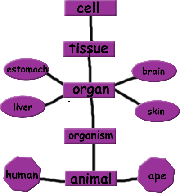Nuclear reactor accidents
4) Fukushima 2011 Japan
Japan has 54 nuclear power stations and all of them are located on the coast. That is nice because it saves money as no cooling towers need to be built (cooling is done by seawater) but it is not appropriate for a country that is subjected to earthquakes and tsunamis…
The Fukushima Daichi nuclear power station comprises 6 reactors, of the BWR type produced by General Electric, that were built over a period of 12 years, so that they acquired different characteristics as technology evolved during this period. On March 11th 2011 reactors 4, 5 and 6 were down for refuelling while reactors 1, 2 and 3 were functioning at full power.
On March 11th , when the enormous earthquake occurred, all operating reactors (units 1, 2 and 3) were automatically shut down (scrammed). Reactors continue to produce heat even after they were shut down because of the energy transferred from the radioactive decay of fission products (decay heat). That means that cooling systems need to continue to work for at least 2 hours after the shutdown. That is the issue that caused this accident and also TMI (described above).
Emergency electricity generators step in to power the cooling system and everything was fine. Even reactors 4, 5 and 6 that were shutdown for refuelling still needed power to cool the spent fuel pool (a water pool that is used to cool spent fuel before it is sent away from the power station).
The disaster started when the tsunami wave arrived. The Fukushima plant had a protective barrier to protect it from tsunamis but it was not large enough. The water came and inundated everything, including the diesel generators which stopped working as a result. There is also another electricity backup system that comprises batteries capable of powering the control room so that gauges and other information dials work and valves can be opened or closed. External power or generators couldn´t be brought to the site because the earthquake had destroyed the roads.
The diesel generators on units 5 and 6 have survived because they were not located underground like the others. The batteries have survived on units 3 and 4. Units 1 and 2 were completely powerless. Unit 2, as well as unit 3, were built with a more recent technology and their cooling systems would work without power for a while (by natural heat convection) but unit 1 was in a critical situation and it would be the first to blow up.
The fuel in unit 1 started to melt as a result of decay heat. Water was boiling and the steam pressure was rising sharply. Hydrogen production had started because of the high temperatures (the zirconium present in the fuel rods reacts with water and produces hydrogen). The reactor split open and released steam, hydrogen and fission products in the containment building. This dangerous mix of hydrogen and fission products, and now oxygen, could explode at any moment so that permission was seek to release this mixture into the environment. The TEPCO (Japanese power company) and government authorities gave the go ahead and a a team of people was sent to find the valve in the dark and open it manually in order to vent the highly radioactive and explosive mixture through the stack. An evacuation order was issued and the difficult job was performed in the highly radioactive environment of the reactor building interior.
Next day, emergency workers were trying to connect external electric power and cooling water to unit 2, when unit 1 exploded and scattered highly radioactive debris all over the place destroying water hoses and everything else. In addition, the emergency operations had to stop because the site became too radioactive.
Next, the cooling in unit 3 stopped and the building exploded, from reasons analogous to unit 1. The cooling in unit 2 also stopped but the building didn´t blow up because it had been ruptured by the explosion in unit , so that the explosive and radioactive mixture could leak through the walls.
Finally, on March 15th, unit 4 exploded. It was though at the time that this building exploded because of the lack of refrigeration at the spent fuel pool but that was not correct. It exploded because it shared the vent stack with reactor 3, so that hydrogen leaked in.
Index of nuclear reactor accidents

